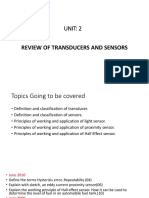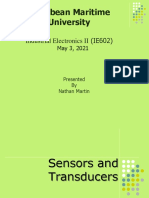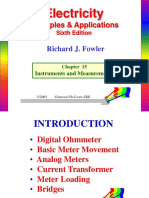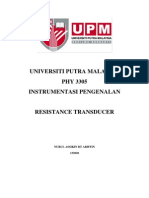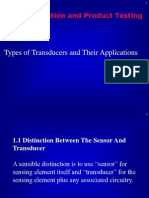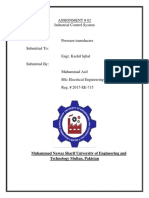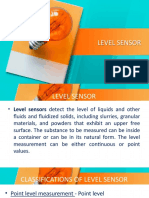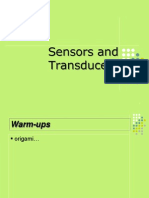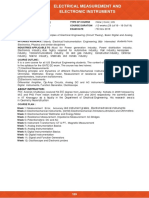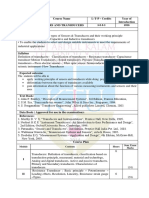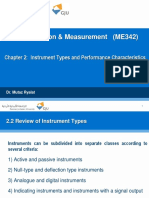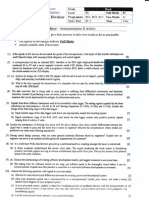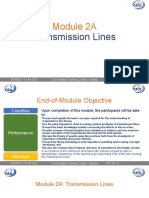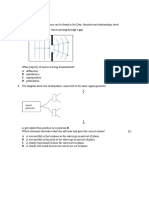0% found this document useful (0 votes)
83 views38 pagesSensors and Transducers Intro
The document provides a comprehensive syllabus on sensors and transducers, covering their concepts, characteristics, types, and applications in control systems. It details various transducer types such as temperature, pressure, and flow transducers, along with their design and performance characteristics. Additionally, it discusses telemetry systems and digital modulation methods relevant to sensor data transmission.
Uploaded by
ezgi.sertogluCopyright
© © All Rights Reserved
We take content rights seriously. If you suspect this is your content, claim it here.
Available Formats
Download as PDF, TXT or read online on Scribd
0% found this document useful (0 votes)
83 views38 pagesSensors and Transducers Intro
The document provides a comprehensive syllabus on sensors and transducers, covering their concepts, characteristics, types, and applications in control systems. It details various transducer types such as temperature, pressure, and flow transducers, along with their design and performance characteristics. Additionally, it discusses telemetry systems and digital modulation methods relevant to sensor data transmission.
Uploaded by
ezgi.sertogluCopyright
© © All Rights Reserved
We take content rights seriously. If you suspect this is your content, claim it here.
Available Formats
Download as PDF, TXT or read online on Scribd
/ 38

